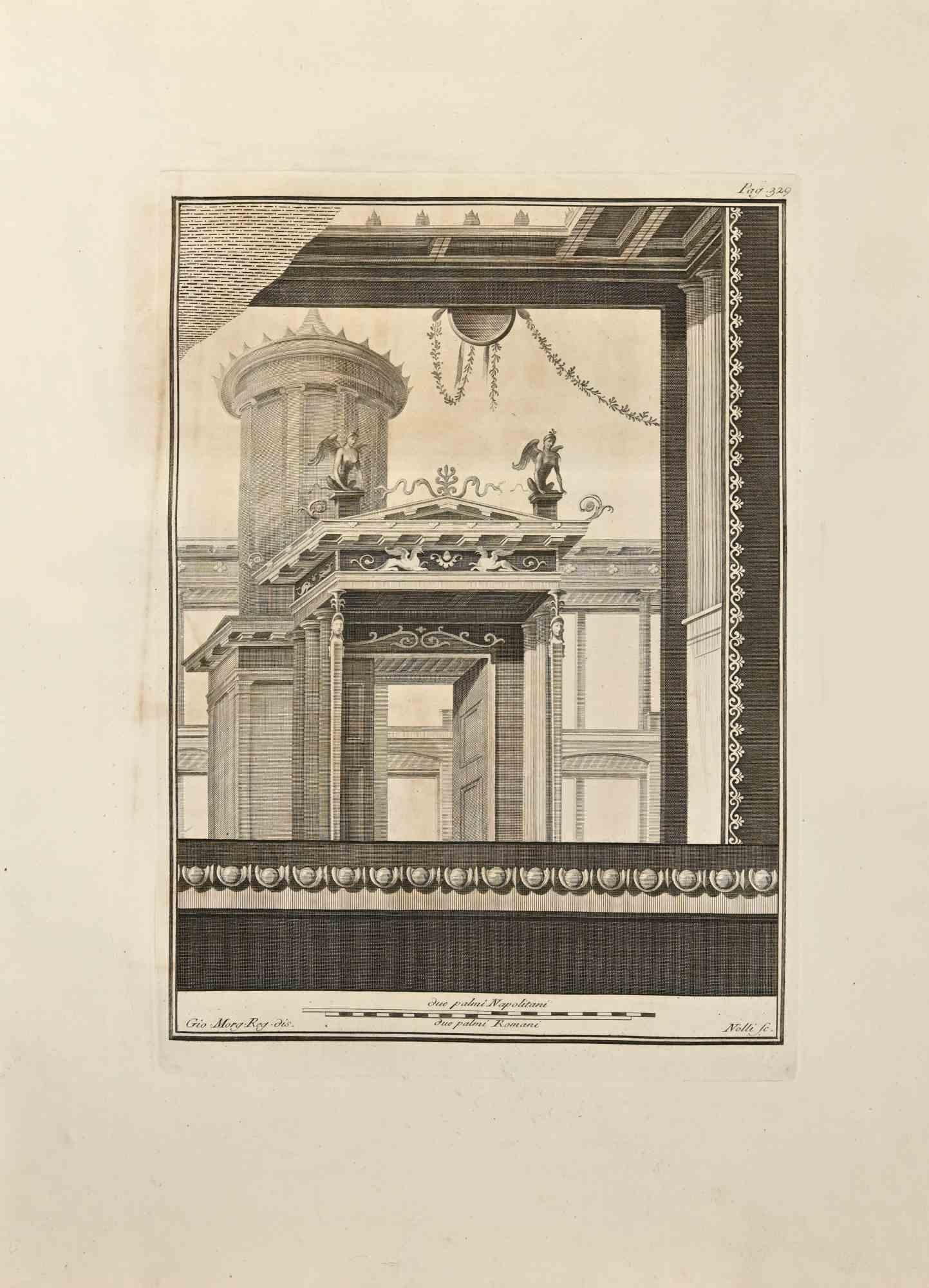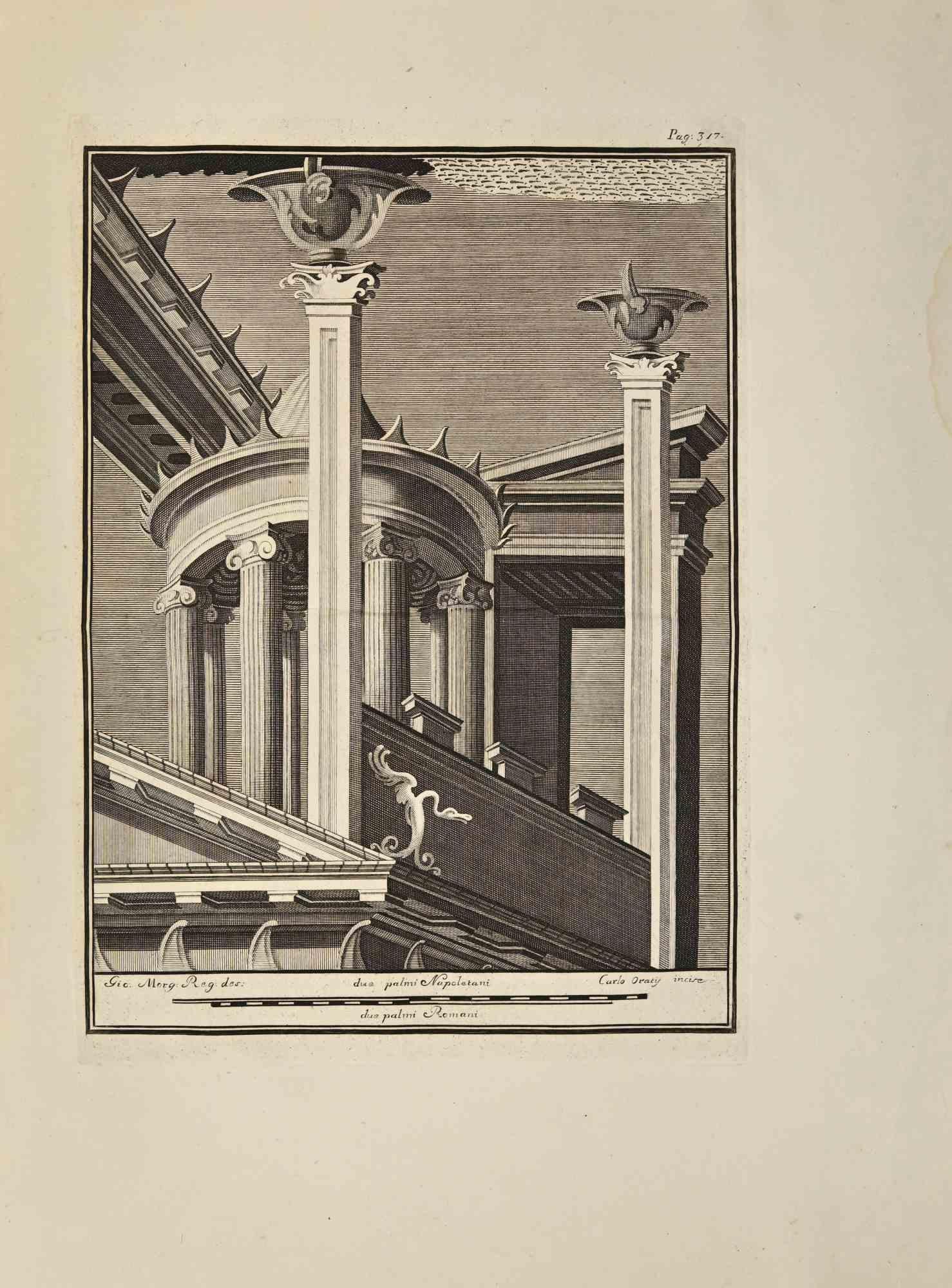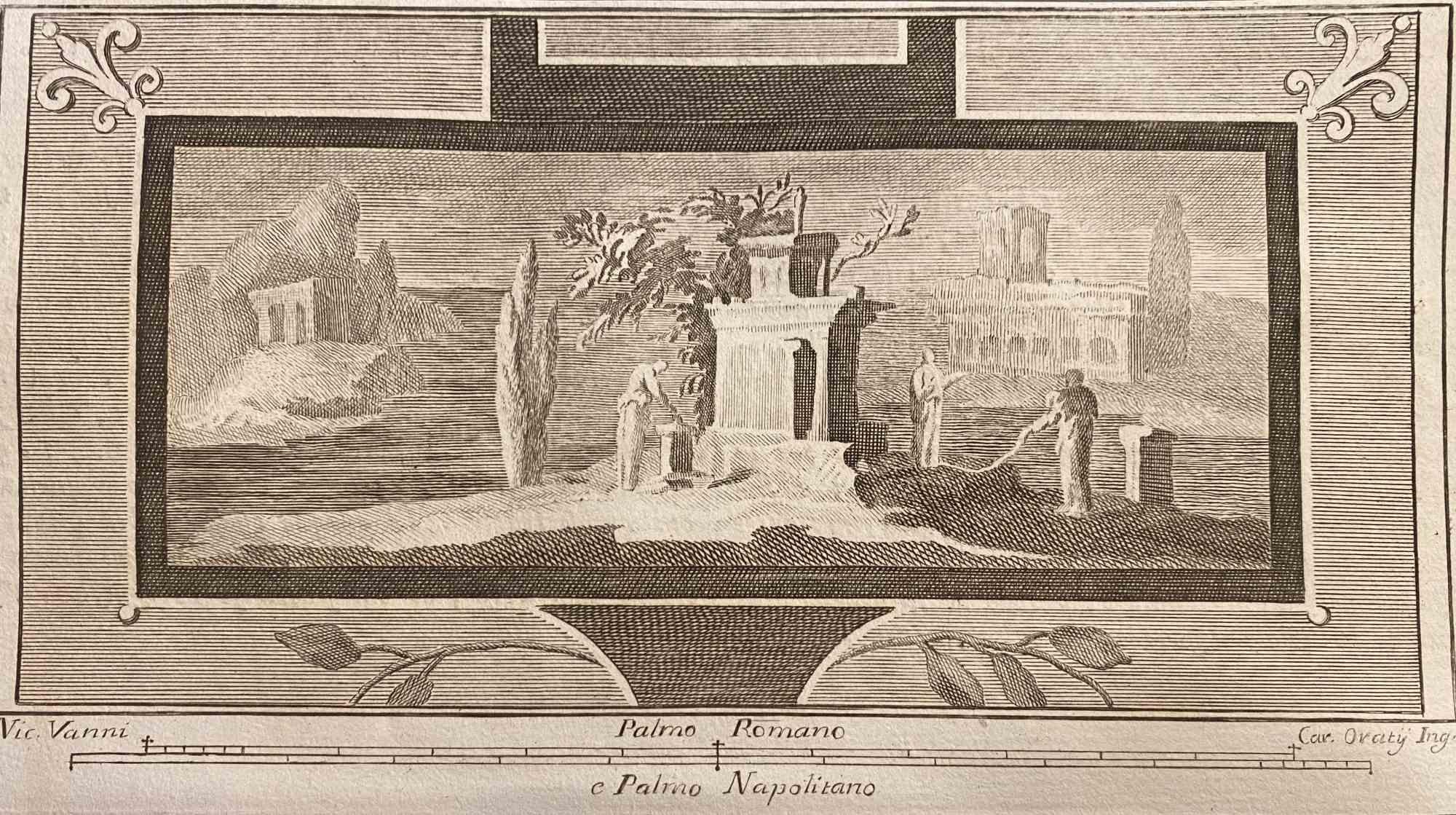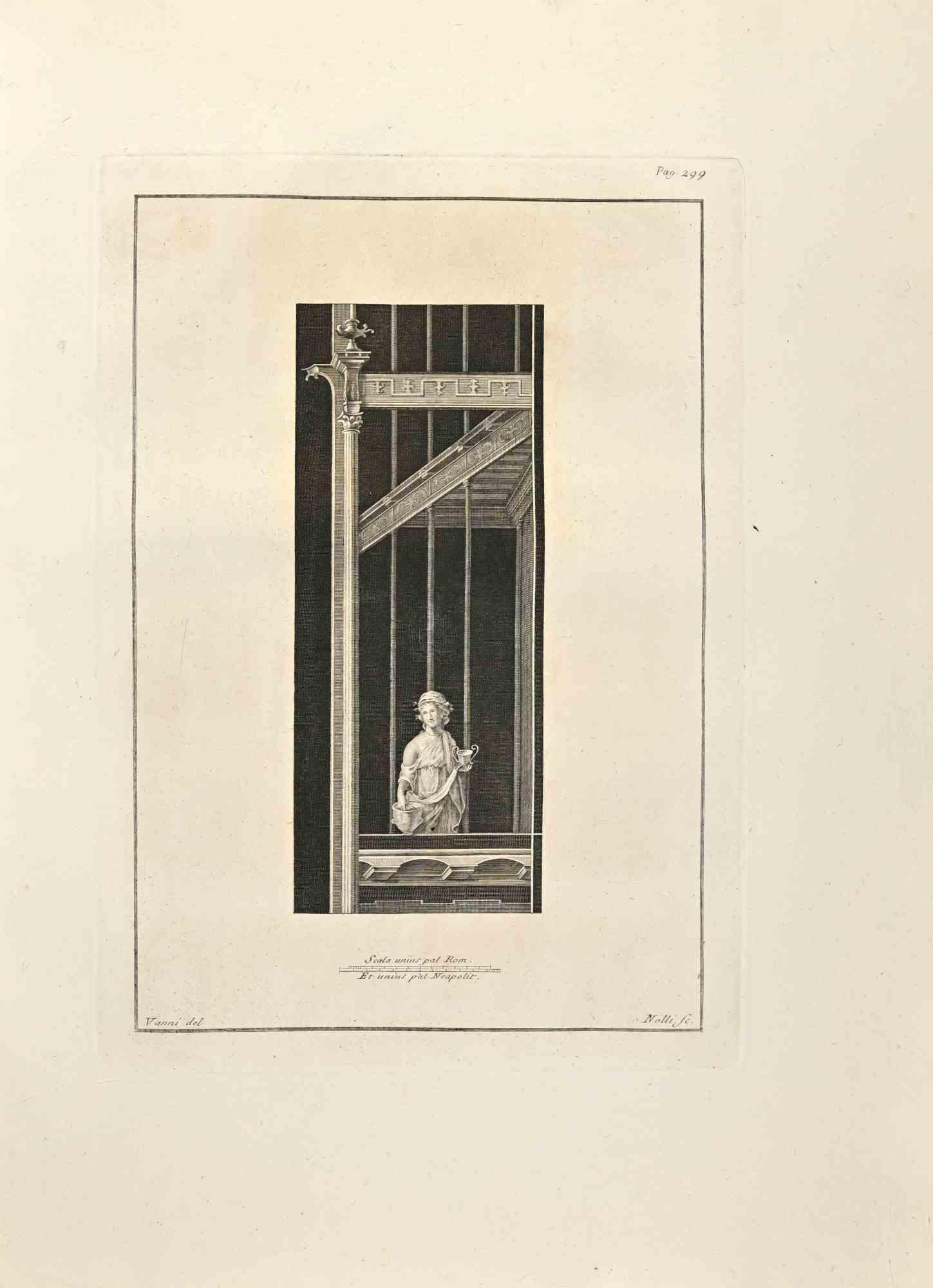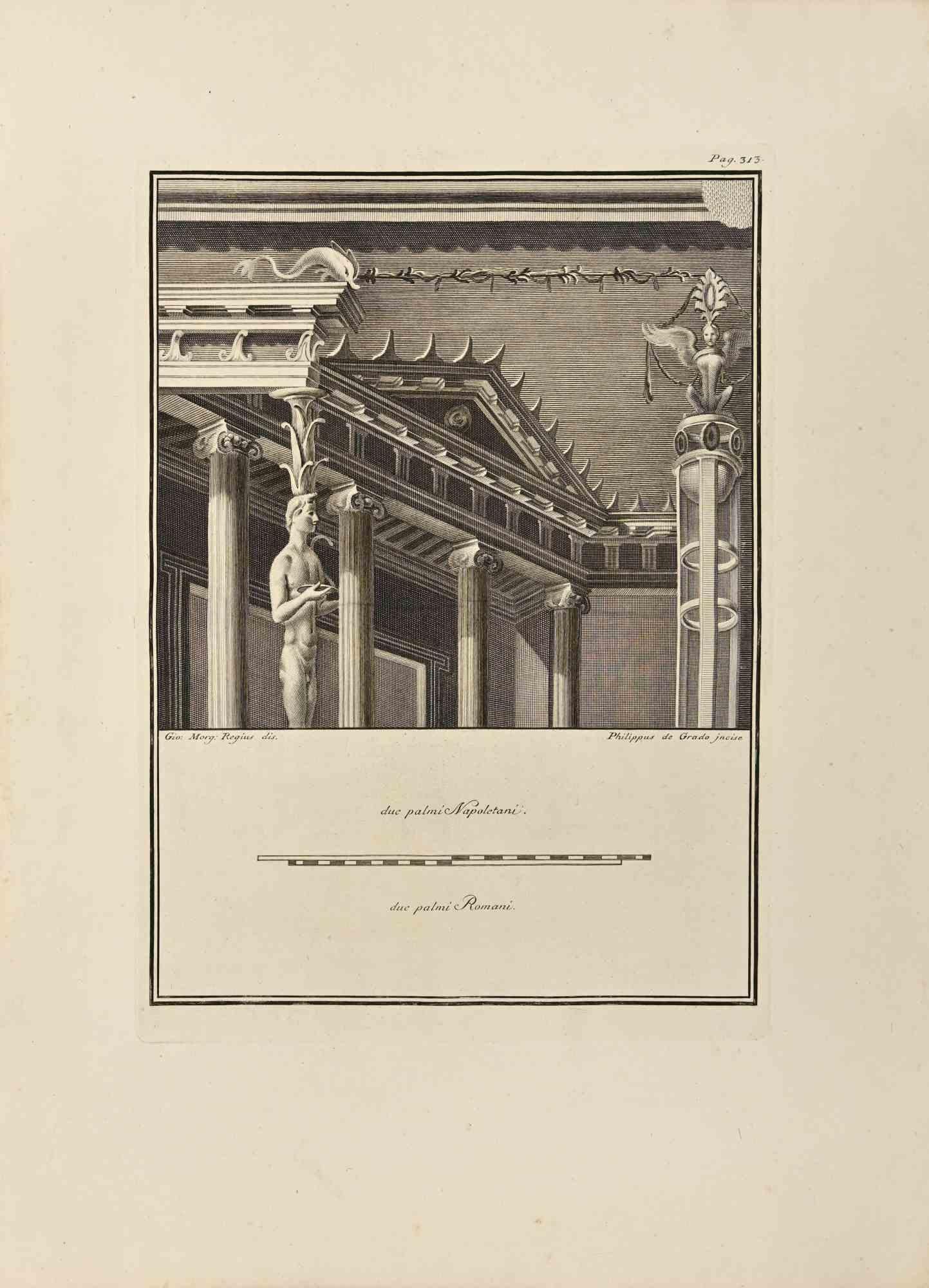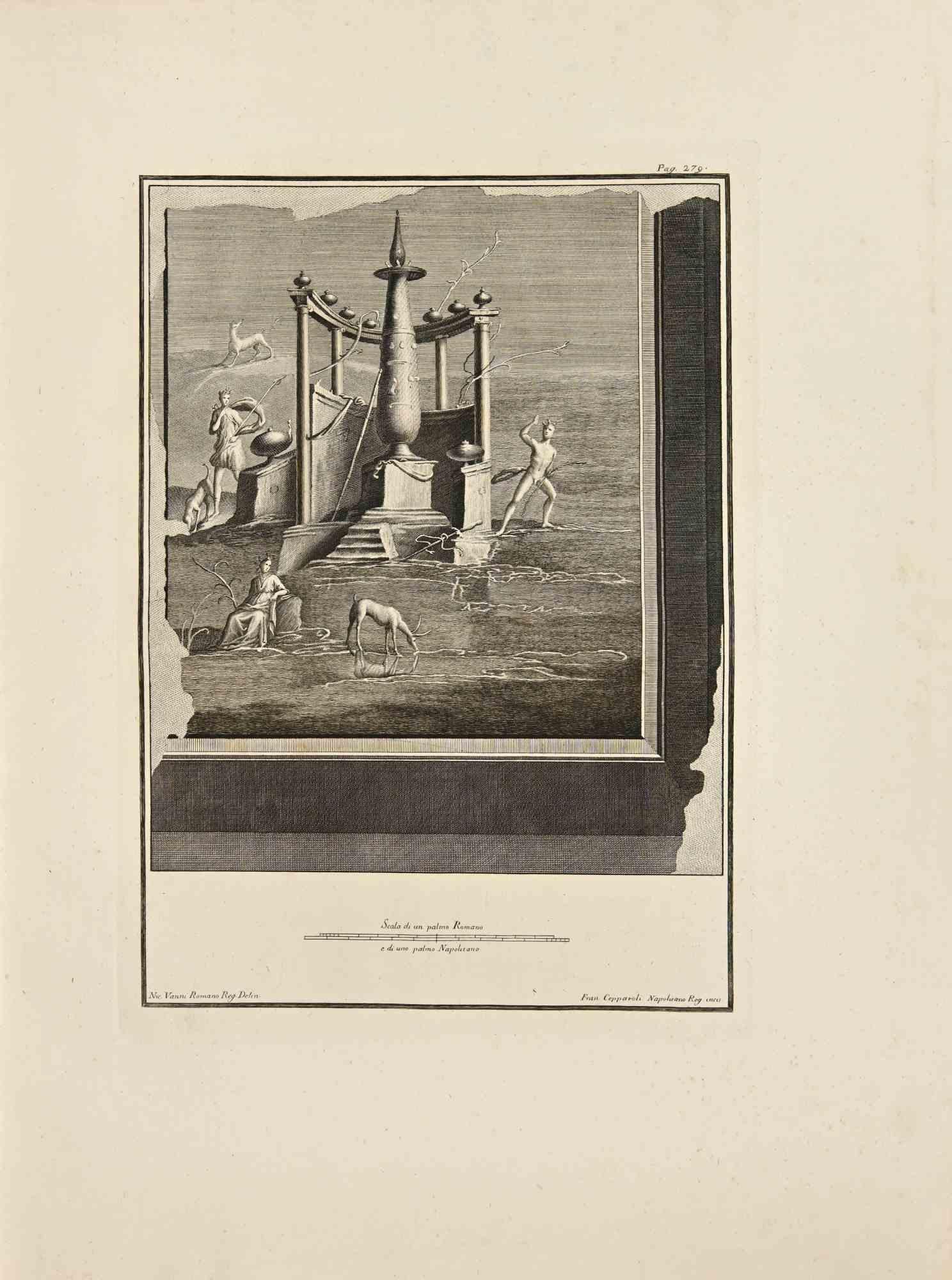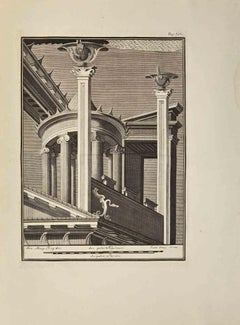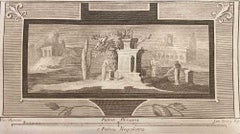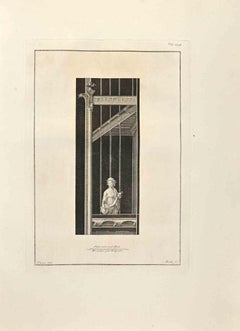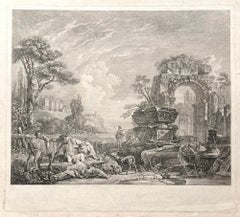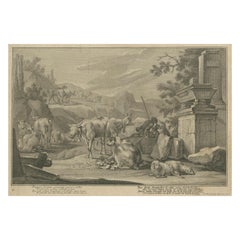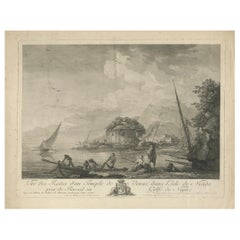Items Similar to Roman Temple With Shepard - Etching by Giussepe Aloja - 18th Century
Want more images or videos?
Request additional images or videos from the seller
1 of 5
Carlo OratyRoman Temple With Shepard - Etching by Giussepe Aloja - 18th CenturyLate 18th Century
Late 18th Century
$537.40
£401.55
€450
CA$741.26
A$812.03
CHF 427.42
MX$9,691.74
NOK 5,448.51
SEK 4,980.76
DKK 3,428.65
About the Item
Roman Temple With Shepard from "Antiquities of Herculaneum" is an etching on paper realized by Giussepe Aloja in the 18th Century.
Signed on the plate.
Good conditions and aged with some folding.
The etching belongs to the print suite “Antiquities of Herculaneum Exposed” (original title: “Le Antichità di Ercolano Esposte”), an eight-volume volume of engravings of the finds from the excavation of the ruins of Herculaneum in the Kingdom of Naples (now Campania, Italy).
It was published between 1757 and 1792 by the Regia Stamperia, and copies were delivered to selected recipients across Europe.
Despite the title, the Antiquity of Herculaneum shows objects from all the excavations undertaken by the Bourbons in the Gulf of Naples. These include Pompeii, Stabia and two sites of Herculaneum: Resina and Portici.
The Bourbon King Carlo appointed fifteen scholars creating a new “Herculaneum Academy” to study the artifacts and publish the results of the archaeological excavations of the sites.
The engravings are of high quality and the accompanying text shows a large scholarship.
They were realized by 25 prominent artists involved by the King to prepare drawings and engravings on the finds, among which we can find Giovanni Elia Morghen, Carlo Nolli, Luigi Vanvitelli, and Giovanni Battista Casanova.
The “Antiquities” was designed more to amaze readers with the quality of the objects in the collection of the King of Naples than to be used in research., following and increasing the interest of 18th-century society for the classical culture and Art in particular.
Through the exaltation of the classical concept of proportions and harmony, the book was of inspiration to the neoclassical movement in Europe, giving artists and decorators access to a huge shop of Hellenistic motifs.
- Creator:Carlo Oraty
- Creation Year:Late 18th Century
- Dimensions:Height: 19.69 in (50 cm)Width: 14.18 in (36 cm)Depth: 0.04 in (1 mm)
- Medium:
- Movement & Style:
- Period:
- Framing:Framing Options Available
- Condition:Insurance may be requested by customers as additional service, contact us for more information.
- Gallery Location:Roma, IT
- Reference Number:Seller: T-1367371stDibs: LU650311748072
About the Seller
4.9
Platinum Seller
Premium sellers with a 4.7+ rating and 24-hour response times
1stDibs seller since 2017
7,862 sales on 1stDibs
Typical response time: 1 hour
- ShippingRetrieving quote...Shipping from: Grasse, France
- Return Policy
More From This Seller
View AllRoman Temple With Sphinx - Etching by Carlo Nolli - 18th Century
By Carlo Nolli
Located in Roma, IT
Roman Temple With Sphinx from "Antiquities of Herculaneum" is an etching on paper realized by Carlo Nolli in the 18th Century.
Signed on the plate.
Good conditions with some foldin...
Category
18th Century Old Masters Figurative Prints
Materials
Etching
Roman Temple Fresco - Etching by Carlo Oraty - 18th Century
Located in Roma, IT
Roman Temple Fresco from "Antiquities of Herculaneum" is an etching on paper realized by Carlo Oraty in the 18th Century.
Signed on the plate.
Good conditions expect some folding a...
Category
Late 18th Century Old Masters Figurative Prints
Materials
Etching
Roman Temple Fresco - Etching by Carlo Oraty - 18th Century
Located in Roma, IT
Roman Temple Fresco from "Antiquities of Herculaneum" is an etching on paper realized by Carlo Oraty in the 18th Century.
Signed on the plate.
Good conditions.
The etching belongs...
Category
Late 18th Century Old Masters Still-life Prints
Materials
Etching
Roman Temple Fresco - Etching by Carlo Nolli - 18th Century
By Carlo Nolli
Located in Roma, IT
Roman Temple Fresco from "Antiquities of Herculaneum" is an etching on paper realized by Carlo Nolli in the 18th Century.
Signed on the plate.
Good conditions with some folding.
T...
Category
18th Century Old Masters Figurative Prints
Materials
Etching
Temple With Sphinx - Etching by Filippo de Grado - 18th Century
By Filippo de Grado
Located in Roma, IT
Temple With Sphinx from "Antiquities of Herculaneum" is an etching on paper realized by Filippo De Grado in the 18th Century.
Signed on the plate.
Good conditions and aged with som...
Category
18th Century Old Masters Still-life Prints
Materials
Etching
Roman Temple On The Wind- Etching by Ferdinando Campana - 18th Century
Located in Roma, IT
Roman Temple On The Wind from "Antiquities of Herculaneum" is an etching on paper realized by Ferdinando Campana in the 18th Century.
Signed on the plate.
Good conditions and aged ...
Category
Late 18th Century Old Masters Figurative Prints
Materials
Etching
You May Also Like
Les Bergers Romains, landscape with Roman ruins, 18th century engraving
Located in Melbourne, Victoria
Les Bergers Romains
Copper-line engraving by Jean Jacques Leveau (1729-1786) after Pierre Mettay (1728-1759). C1755.
Proof, before lettering. Laid, watermarked paper.
A landscap...
Category
18th Century French School Landscape Prints
Materials
Engraving
Pastoral Engraving by Johann Jakob Kleinschmidt: Shepherd, Cattle, and Ruins
Located in Langweer, NL
Title: Pastoral Scene with Cattle and Shepherds
Artist: Johann Jakob Kleinschmidt (1687–1772)
Designer: Initials "A.V." (specific identity unknown)
Date: Circa 1720–1750
Mediu...
Category
Antique 1730s Prints
Materials
Paper
Allegorical Frontispiece of Rome's Ruins, Pieter van der Aa & F. Halma, 1696
Located in Langweer, NL
This engraving is an allegorical frontispiece featuring a depiction of the ruins of ancient Rome, emphasizing the enduring legacy of the city's grandeur through its remnants. The com...
Category
Antique 1690s Prints
Materials
Paper
Neapolitan Ruins – Antique Engraved View of the Temple of Venus, Nisida, 1761
Located in Langweer, NL
Vue des Restes d’un Temple de Vénus, Isle de Nisida – Antique Engraved Gulf of Naples View (1760s)
This impressive 18th-century French engraving presents a sweeping coastal view of ...
Category
Antique 1760s French Prints
Materials
Paper
Antique Print of An Ancient Roman Tomb and a Floor Plan in Rome, Italy, 1704
Located in Langweer, NL
Description: Antique print, untitled. This original old antique print shows an ancient Roman tomb and a floor plan in Rome, Italy.
This original old ant...
Category
Antique Early 1700s Prints
Materials
Paper
Ruine di Sepolcro antico
By Giovanni Battista Piranesi
Located in Fairlawn, OH
Ruine di Sepolcro antico
Etching, 1743
Signed in the plate bottomleft in the caaption plate
From: Prima Parte, 1743
Second edition: 1750-1778
Watermark: R 37-39
A lifetime impression printed during Piranesi’s life, before the plates are moved to Paris by his sons in the 1790’s
Coniditon: Excellent/Very good
Image size: 14 5/8 x 9 3/4 inches
Reference: Robison 17 iii/V
Piranesi In Rome: Prima Parte di Architetture e Prospettive
"Although Piranesi studied architecture in Venice, he never was able to find work in the field other than a few jobs involving remodeling in Rome. While Piranesi was struggling to support his architectural endeavors upon his arrival in Rome in 1740, he spent a short period of time in the studio of master painter Giovanni Battista Tiepolo (1696-1770) in addition to his apprenticeship with Giuseppe Vasi. The first production of Piranesi’s early years in Rome and a culmination of his training under Vasi, Tiepolo, and his uncle, was the Prima Parte di Architetture e Prospettive (1743). The Prima Parte was a collection of twelve etchings of imaginary temples, palaces, ruins, and a prison. During this time, Piranesi was still developing the unique style of etching he is known for today, and as such the Prima Parte differs significantly in technique compared to later works. In the Frontispiece of the Prima Parte, Piranesi’s lines are definite and exact with very little flow to them, designed in the form of traditional etching. The detail is immaculate, and yet perspective of the piece is oddly simple and familiar to the viewer. Piranesi’s technique employs miniscule markings and lines, intricately woven together to create a stippling effect. The Prima Parte, described as “rigid” by art historian Jonathan Scott, came to be seen as a stark contrast to his later sketches, which were much lighter and freer. Influenced by the style of Tiepolo, which epitomized the lightness and brightness of the Rococo period, Piranesi adopted some of the more painterly techniques of the masters he apprenticed under. Piranesi made the medium of etching appear as though it was a sketch or a painting, hence a “freer” and more fluid design in his later works. For example, the frontispiece of the Prima Parte read as an etching to Piranesi’s audience, but in his later vedute, the style of etching almost appears to be made of brushstrokes. Moreover, at the same time Piranesi was working on the Prima Parte, he aided the artist Giambattista Nolli. There is a small section of Nolli’s map...
Category
1740s Old Masters Interior Prints
Materials
Etching
More Ways To Browse
Roman Temple
Lowell Nesbitt Tulip
Antique Botanical Prints Australia
Hunt Slonem Serigraph
Jean Louis Prevost
Antique Garden Seeder
Kusama Flowers
Sunflower Botanical Print
Dick English
Ellen Gunn
Brooklyn Brownstone
Peter Blake I Love You
Physica Sacra
Still Life With Picasso
Unsigned Warhol
Vintage Daffodil Prints
Warhol Electric Chair Print
Brian Davis
